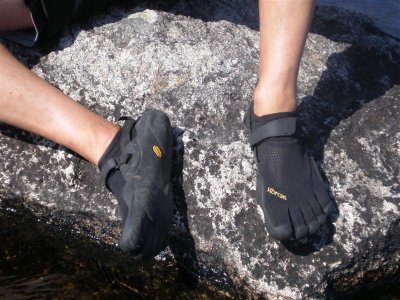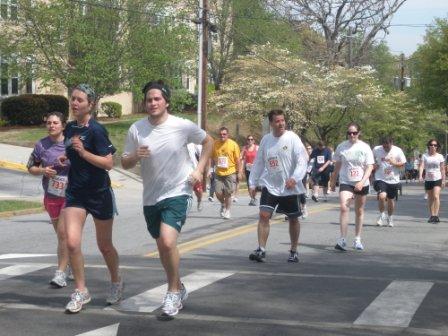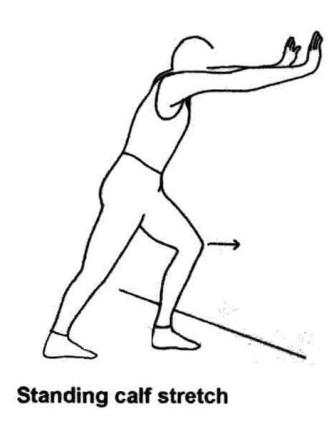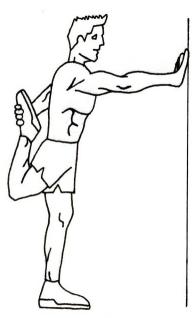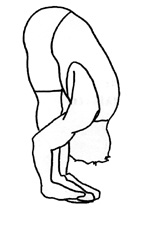First off, Happy National Trail Running Day Eve! I am so excited that I woke up at 5 this morning just thinking about all the awesome trail running I’m going to do tomorrow. I gotta do some last minute shopping today…

I want to talk about running within you capabilities and limitations. I learned about knowing your limits for the first time when I was 18. A group of friends and I drove up to Tsali trails in North Carolina to do some mountain biking Senior year of High School. After our ride we were cruising down Hwy 28 a couple of miles from the trails and drove over a bridge across a lake. So we decided to jump off it. This actually started a craze for me and my friends which we called “bridge jumping.” From then on we never passed over a bridge without someone saying, “You think we could jump this?” At any rate, after some jumps we wanted something a little more extreme so we went to a second bridge that was probably twice the height of the first one. We walked down to the water see how deep it was. There was a fisherman who had a depth finder and told us it was deep enough but someone had died a couple of years back jumping off that bridge. Of course our 18 year old egos knew that that would not happen to us. So we went back to the bridge to look down and consider jumping. I said to my friend who would do anything extreme, “I’ll do it, if you do it first.” I’m not really into being a guinea pig. He turned to me and said, “I’m not going to do it. I know my limits.” This was the first time I had ever heard any of my friends talk about having limits and especially this friend. He wasn’t scared of anything! We didn’t jump the bridge and went to meet my parents for a Southern cooked meal. The reason I remember this day is because I had always grown up with limitations put on me and I was usually trying to figure out how to push the limits. Actually limiting yourself? Yes, you should.
I ran another runner to absolute exhaustion last night at my running club. I felt bad with a smidgen of pride. We were doing a 5 mile run and admittedly I started the pace out pretty fast. We had a larger group running with the “faster” people and I wanted to spread it out a bit. I knew who our fastest runner was (a female actually), so as long as she kept pace then it was not too fast for a group run. For the first time, another guy, a 22 year old who runs 5Ks in the 17s, stuck with us. I had never run with this guy before but a lot of people in the group knew him. I could tell he was hurting by his breathing during the run but he was keeping up. With just under a mile left I got stuck behind the two of them on an uphill so I went around them and pushed it up the hill. I like to push the hills, get them over with as soon as possible. Well, I think this other runner took this as me racing him. So he turned on his speed and from there until we got back he pushed his pace to the limit. I stayed with him, staying a half stride back, running his pace, but I could tell he wanted to kill me in this run. I won’t get competitive in group runs unless you verbally challenge me. We finished on a downhill with each other and his legs just plopping on the ground, he wasn’t running, I knew he had nothing left in his legs.
After we were done I went to give him a high five but he was busy walking around, cooling off. I talked to some other runners and hung out for a bit. Then I saw him sitting on a bench with people around him. He was out of it. In a daze. Could barely talk and that was only one word answers. We got him some jelly beans, orange juice, Gatorade, and nuts, but he was too exhausted to even in take any of these nutrients. He then laid down on the ground because he was too weak to sit on a bench. We were concerned and luckily had a doctor with us who was monitoring this exhausted runner as well. After about 45 minutes to an hour he actually started to “come to” and hold a conversation, even smile a bit. We called his girlfriend to come pick him up to make sure he would be alright the rest of the night. That’s what you get from trying to push the pace with. You can’t beat me. “Don’t touch me, cause I’m electric, and if you touch me, you’ll get shocked!” -Beastie Boys. Now I know this running club is going to be a race day for me and I’ll have to treat my eating as such. I’m sure he wants revenge…but he will never taste it.
The point is, you have to know your limits and capabilities. I have the utmost respect for this other runner. To leave it all out there on a 5 mile group run. Not letting anyone pass him. That’s how serious runners are, always pushing it, not accepting defeat. But the problem is that he overexerted himself to the point where he actually put himself in danger. I’m all for taking risks, but calculated risks. You must know your capabilities and properly set your limits to avoid a catastophie like a serious injury. If you haven’t been running and are not in shape to run a 17 minute 5K then back it off a bit, there’s nothing wrong with it.
Listen to Ice Cube and, “Check yourself before you wreck yourself fool.”






